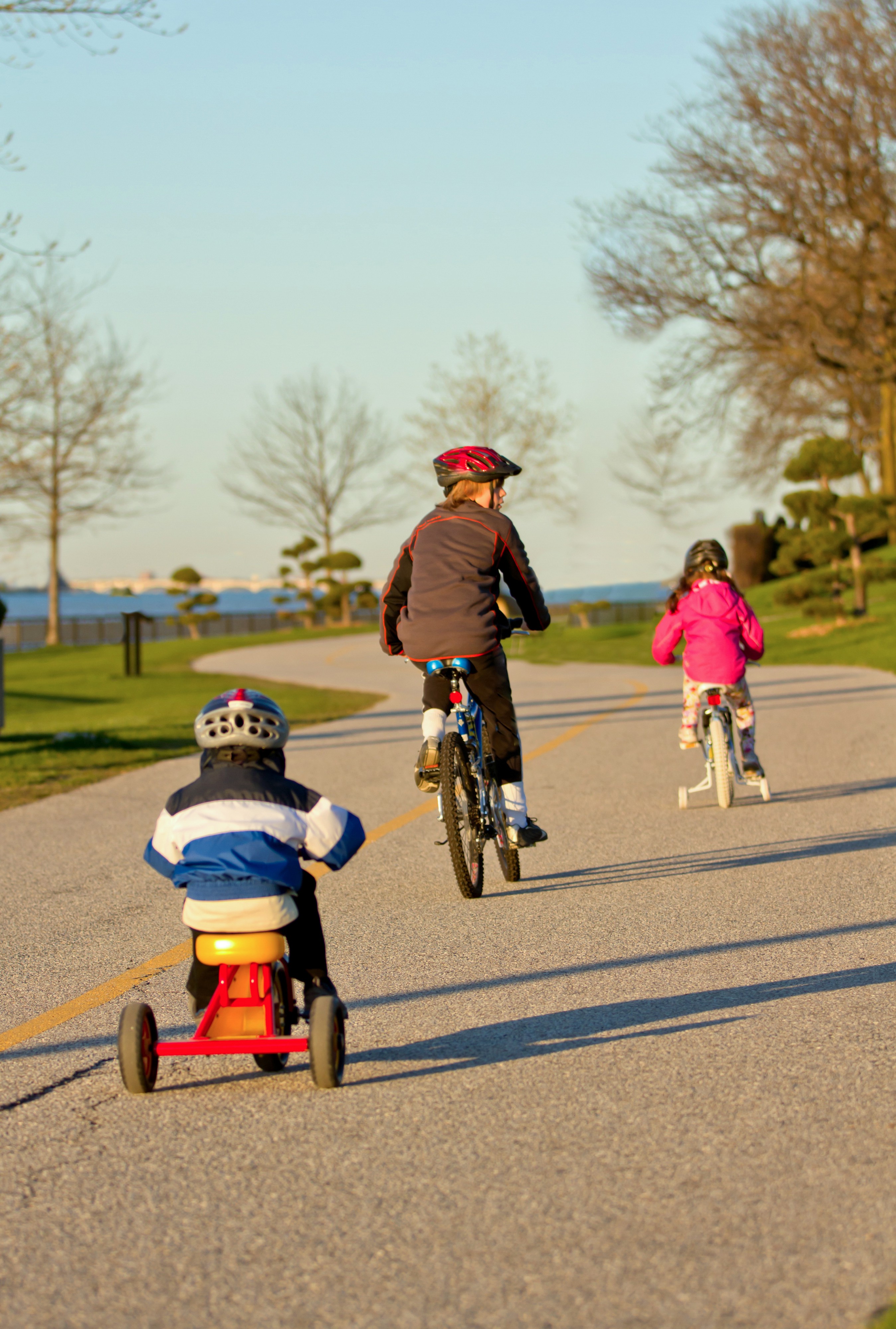Active Transportation Master Plan
Walk Wheel Windsor
Spring 2019 Project Update
Walk Wheel Windsor – our Active Transportation Master Plan – has been completed thanks to the thousands of comments and suggestions we've received from Windsor residents. To report back on the results of the past three phases of Walk Wheel Windsor, four discussion papers and three engagement summaries have been prepared, as well as the Windsor Bike Share Report, and the Active Transportation Master Plan:
- Discussion Paper #1
- Engagement Summary #1
- Discussion Paper #2
- Engagement Summary #2
- Discussion Paper #3 (PDF, 51 MB)
- Discussion Paper #4 (PDF, 52 MB)
- Windsor Bike Share Report
- Engagement Summary #3
- Active Transportation Master Plan (PDF, 24 MB)
Using public input, the Walk Wheel Windsor team has identified the strategies, actions, and network plans for the master plan to improve active transportation over the next 20 years and beyond.
Students are encouraged to take active transportation to school. Don’t forget to check the MappMySchoolNeighbourhood APP to plan your hassle-free route to school!
What is "Walk Wheel Windsor"?
Windsor residents move around our city in many different ways – walking, biking, skateboarding, riding the bus, driving, carpooling – the list goes on. The City of Windsor is committed to improving walking, biking, transit and other active mobility options through Walk Wheel Windsor. That's what we're calling our new Active Transportation Master Plan. The plan sets the foundation for developing well-connected, attractive active transportation networks that are safe, convenient and user-friendly, no matter what mode of transportation people use.
The Walk Wheel Windsor team has developed a vision along with policies and actions to guide the development of safe, attractive and convenient active transportation options for people of all ages and abilities over the next 20 years. The focus has been on creating active transportation opportunities to get people where they need to go—work, school, appointments and activities.
Project Timeline:

What is "active transportation" anyway?
 Active Transportation is basically any form of human‐powered transportation. Walking and cycling are the most popular and well known forms of active transportation. However, the definition extends much further than that – as long as it is "active," you choose the mode: skateboarding, wheeling, pushing a stroller, accessing transit, in-line skating, using a mobility aid, etc. Active transportation is any active trip you make to get yourself, or others, from one place to another ‐ whether it's to work, school, the store or to visit with friends.
Active Transportation is basically any form of human‐powered transportation. Walking and cycling are the most popular and well known forms of active transportation. However, the definition extends much further than that – as long as it is "active," you choose the mode: skateboarding, wheeling, pushing a stroller, accessing transit, in-line skating, using a mobility aid, etc. Active transportation is any active trip you make to get yourself, or others, from one place to another ‐ whether it's to work, school, the store or to visit with friends.
What are the benefits of "active transportation"?
There are many benefits that come with using active modes of transportation. Those who choose to move actively for their day-to-day transportation maintain a healthier lifestyle through increased physical activity and spend less on transportation costs, reducing the amount of money spent on gas and parking. Having more active transportation options also improves mobility for non-drivers, such as seniors, youth and low income residents.
The benefits of active transportation also extend to other road users and more generally, the broader community. For example, active transportation helps to:
- Create more livable communities;
- Reduce vehicle-related air pollution;
- Reduce traffic congestion for all road user;
Quick Facts:
 10% of trip to work are made by people walking, biking, or taking transit.
10% of trip to work are made by people walking, biking, or taking transit.- Did you know? Windsor has:
- More than 1,000 km of sidewalks and trails
- More than 50 km of bike lanes
- More than 130 km of multi-use pathways
- Plus:
- Two-thirds of residents are within 400 m of a bike route.
- Two-thirds of residents are within 400 m of a bus route.
- Our buses make more that 6.3 million passenger trips, travelling 5.7 million km annually.
- All buses have a bike rack.
Why does Windsor need an active transportation plan?
The City of Windsor is committed to sustainability and recognizes the important role active transportation plays in enhancing community health, safety and livability. In 2015, City Council adopted a new 20-year Strategic Vision for the City, which now serves as a cornerstone for Council and City administration when making decisions with respect to programs, services and infrastructure. The Strategic Vision embraces three main goals for the next 20 years:
- More Jobs in Windsor
- Addressing Windsor's Reputation
- Improving Quality of Life in Windsor
The vision states that Windsor will provide a high quality of life for all by strengthening the city as a whole by supporting its neighbourhoods and districts, encouraging convenient transit and transportation options, and ensuring excellent service delivery. In addition, the recently approved Windsor Community Energy Plan set targets that will allow our city to build towards a smart energy future that consumes 40% less energy and emits 40% fewer greenhouse gases. Walking, cycling and an integrated transit system will be heavily relied on to meet these targets.
Creating an Active Transportation Master Plan with a strong focus on multi-modal transportation will further the aspirations outlined in both the 20-year Strategic Vision and Windsor Community Energy Plan.
Transportation Planning Division
350 City Hall Square West
Windsor, Ontario
Canada
N8X 3M7
Hours of Operation: 8:30 a.m. - 4:30 p.m.
Phone: For general information, call 311. For detailed inquiries, call (519) 255-6267.
Email: 311@citywindsor.ca
